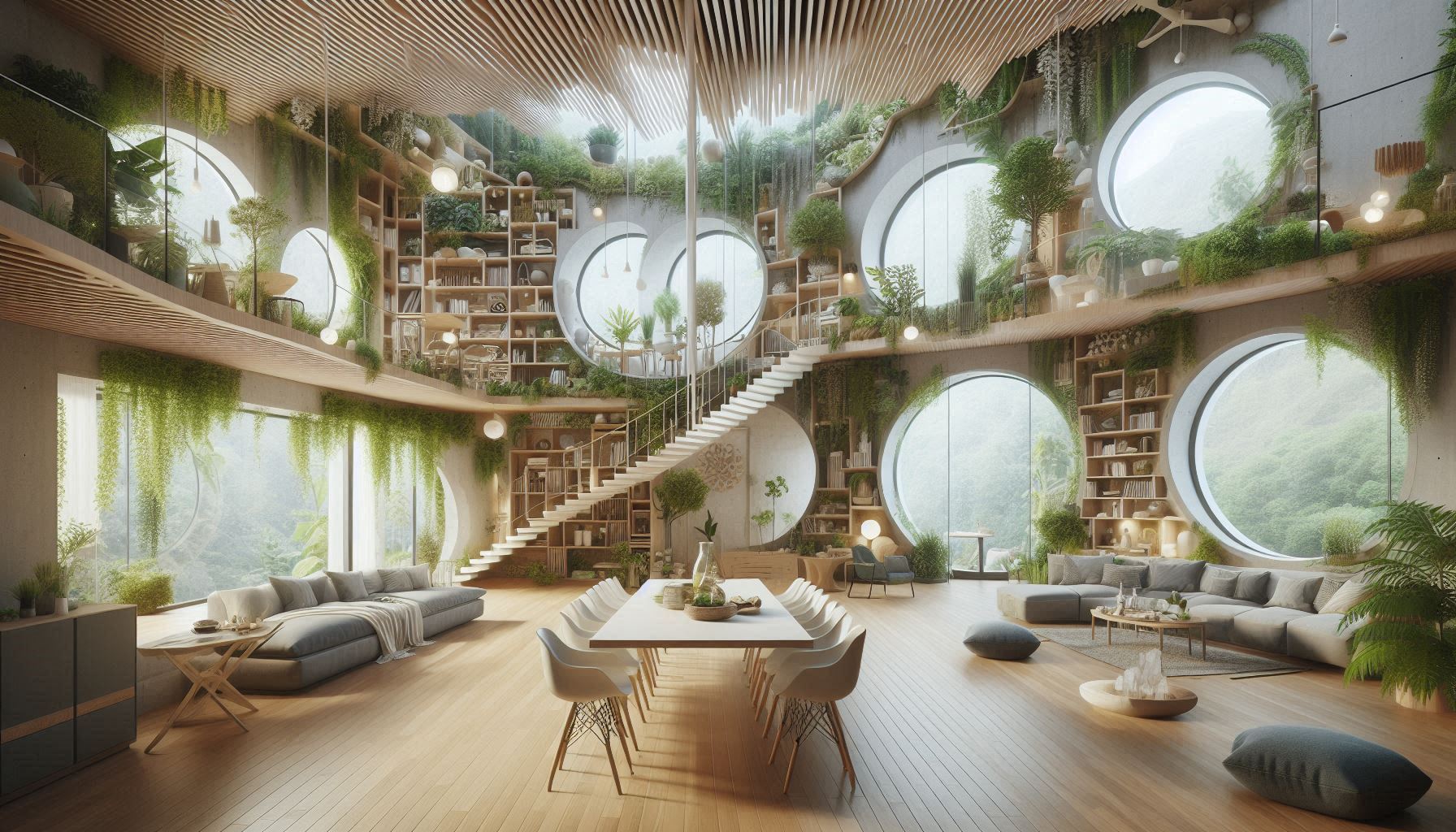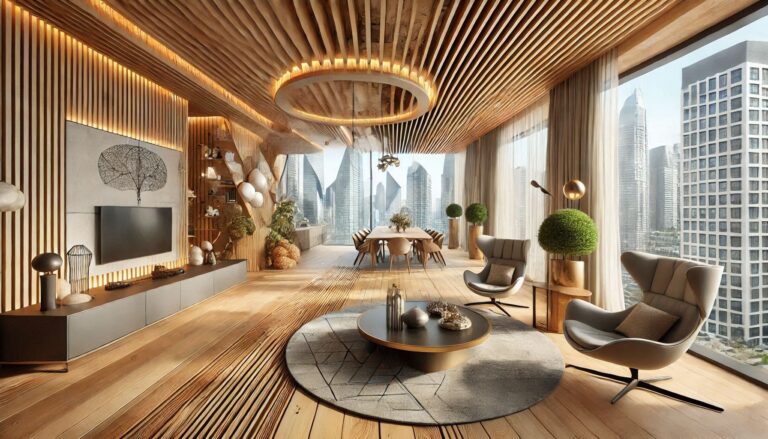Designing for Wellness: The Rise of Biophilic Design and Its Impact on Interiors

Biophilic design, the practice of incorporating elements of nature into interior spaces, is gaining momentum as a way to improve well-being and create healthier environments. Here’s how biophilic design is influencing modern interior design:
1. Connection with Nature
Biophilic design emphasizes creating a strong connection with nature through the use of natural light, plants, and organic materials. Incorporating large windows, skylights, and natural light fixtures helps bring the outdoors in, while the addition of indoor plants and green walls adds visual interest and purifies the air.
2. Stress Reduction and Mental Health Benefits
Numerous studies have shown that exposure to nature has significant mental health benefits, including reduced stress and improved mood. Biophilic design incorporates natural elements into spaces to create calming and restorative environments. This is particularly beneficial in workspaces, healthcare facilities, and residential areas, where people spend a lot of time.
3. Use of Natural Materials
Natural materials like wood, stone, and wool are key elements of biophilic design. These materials not only provide a connection to the natural world but also contribute to a sense of warmth and comfort. Wooden floors, stone countertops, and wool rugs help create a serene, nature-inspired atmosphere.
4. Creating Zones for Relaxation and Reflection
Biophilic design encourages the creation of spaces that promote relaxation and reflection. This might include cozy reading nooks, meditation spaces, or outdoor patios designed with natural elements. These zones are designed to help people unwind, reconnect with themselves, and engage in mindfulness practices.
5. Incorporating Water Features
Water features, such as fountains, waterfalls, or indoor ponds, are another common element of biophilic design. The sound of flowing water can have a calming effect, reducing stress and enhancing the overall ambiance of a space.
6. Indoor-Outdoor Living
Biophilic design often blurs the line between indoor and outdoor living. Designers are increasingly creating spaces that seamlessly connect with nature, such as patios that extend living areas, or rooms that open up to lush gardens. This creates a sense of openness and encourages occupants to engage with the natural world around them.
Conclusion
Biophilic design is a powerful tool for enhancing well-being and creating healthier interior environments. By incorporating natural elements like light, plants, and organic materials, interior designers can create spaces that support mental health, improve productivity, and foster a deeper connection with nature.






